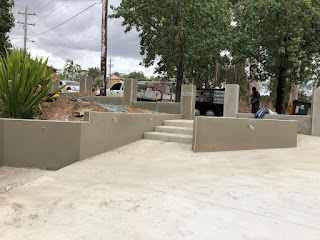Benefits of Polystyrene Concrete in Construction, According to Experts
The search for a material that may reduce or do away with the requirement for outside wall insulation likely led to the development of polystyrene concrete. The addition of polystyrene balls to concrete plaster has greatly increased the insulating properties of the latter. Cement, sand, water, polystyrene foam granules, certain plasticizing and air-entraining chemicals, and occasionally surfactants that enhance the adhesion of concrete mortar and foam balls make up the whole ingredient list for a contemporary polystyrene concrete block.
The block's properties, such as its ability to bear weight, create partitions, or provide insulation, are determined by the materials from which it is constructed. One polystyrene foam block is equivalent to twenty bricks; therefore by using Acrylic Rendering Sydney, construction time may be drastically reduced. The distinctive make-up and production method of the blocks are likely responsible for the following tangible benefits:
Increased Resistance to Thermal Conductivity
The producers claim that in locations with moderate temperatures, a wall thickness of only 20 centimetres will give adequate resistance to the transfer of heat. Walls 30 centimetres thick are required in areas with harsher winters; nevertheless, here, walls 20 centimetres thick composed of polystyrene concrete and foam insulation are the norm. Its thermal conductivity coefficient varies with density; although it is always much lower than that of almost any material to which it is comparable. Selecting the Acrylic Rendering Sydney service is the perfect idea here.
Enhanced Capacity to Deaden Ambient Noise
A twenty-centimeter-thick wall has the potential to absorb sound at a level of seventy-two decibels; the blocks' light weight and generous proportions make building a house easier and faster. Modern, sophisticated heavy machinery is unnecessary. It is impervious to water, mould, and vermin, and the blocks provide just the shape needed to build a house with any complexity in design. But, the quantity of material required to complete the project will grow dramatically.
Ability to withstand cold temperatures
The material is three times as resilient as comparable foam concrete in the face of freezing and thawing temperatures, withstanding up to one hundred cycles. The G1 flammability grade indicates that this material is very difficult to ignite. It's true that whenever you listen to a story, there are always two sides to take into account. The structure probably won't burn down, but thereafter, it won't be fit for the purpose for which it was built since its walls won't be as strong as they were before the fire.
You should not be bashful about asking where the production facilities are located and showing genuine interest in the quirks of the manufacturing process when placing an order for polystyrene concrete. Indeed, you should have zero hesitations about doing so. You can select the best options for Cement Rendering Sydney here.
Conclusion
Brick, siding, and plaster may all be used to provide a variety of different ornamental effects. Plastering, putting up plasterboard, and finishing the inside with whatever finishes you choose (paint, wallpaper, ornamental plaster, etc.) are all necessary steps. A home may be constructed from polystyrene concrete in a matter of months, and once finished; it will be sturdy enough to last for decades while taking use of all the perks that come with modern construction techniques. It's crucial to use the right fasteners and allow for enough airflow.






Comments
Post a Comment